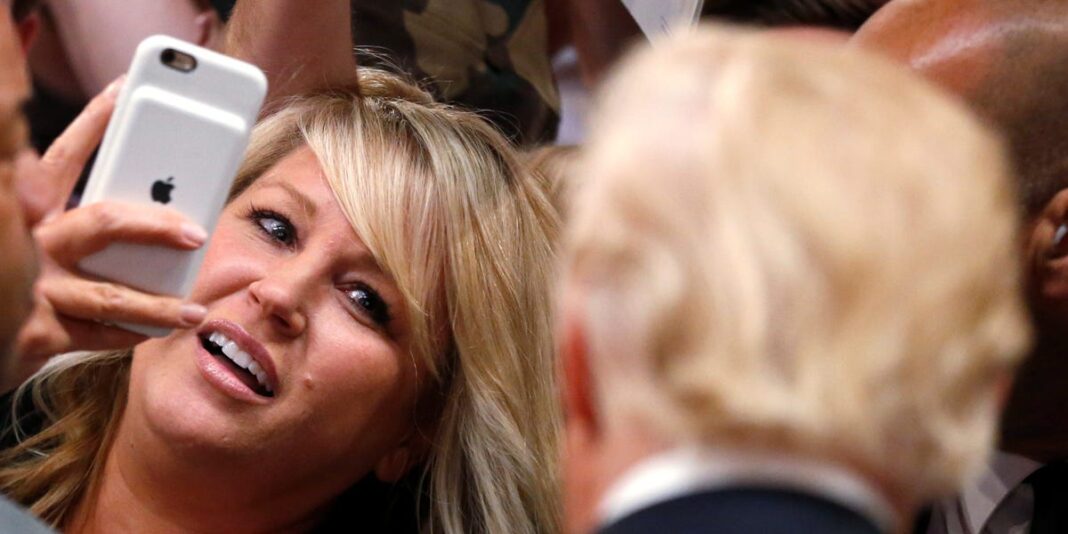Apple’s stock was on fire. Wall Street was abuzz, predicting a boom fueled by the supposed magic of artificial intelligence. Analysts painted scenarios of eager consumers flocking to stores for the latest iPhone, their pockets lined with cash, all thanks to AI’s irresistible allure. But the truth, as it often does, took a decidedly less predictable turn. Turns out, the real driver behind this surge was a much less glamorous, yet undeniably powerful, force: fear of Donald Trump’s tariffs. This isn’t just a tale of two economic forces clashing. It’s a story about how Wall Street’s predictions can sometimes fall flat, revealing the unpredictable realities of the market and the often-overlooked factors that truly shape consumer behavior.
The Unexpected Driver of iPhone Sales: Fear of Tariffs

In a surprising twist, it wasn’t flashy AI features that finally nudged longtime iPhone users to upgrade — it was tariffs. Wall Street analysts have been predicting a major iPhone upgrade cycle since Apple started integrating generative AI into the devices about a year ago. It hasn’t really happened yet. However, fears of impending price hikes due to tariffs drove a notable surge in iPhone purchases in the first quarter of 2025, according to data from Consumer Intelligence Research Partners (CIRP). This wasn’t a marginal blip. The percentage of US iPhone buyers retiring phones three years or older hit 39% in this recent period. That’s up from a steady 30% in previous quarters. “That is a significant shift,” CIRP founders Michael Levin and Josh Lowitz wrote in a note to clients on Wednesday. “The threat of tariff-induced price increases really moved the needle.”
Beyond AI: Why Consumers Upgraded Early
The Analyst Prediction

Wall Street analysts were expecting a significant upswing in iPhone sales fueled by the integration of advanced AI capabilities into the latest models. The expectation was that consumers would be eager to experience the benefits of these new technologies, leading to a wave of upgrades.
The Reality
However, data from CIRP paints a different picture. While AI features undoubtedly play a role in consumer perception, the primary driver behind the recent surge in iPhone purchases appears to be the looming specter of price increases due to tariffs. This unexpected development highlights the significant impact that economic factors can have on consumer behavior, even in the tech industry.
Consumer Intelligence Research Partners (CIRP) findings reveal a 39% jump in US iPhone buyers replacing phones three years or older in the first quarter of 2025.
This increase comes after a period of relative stability, with around 30% of iPhone buyers opting for a new device every quarter.
The Psychology of Tariff Anxiety
The data suggests that long-term iPhone owners, who are typically more budget-conscious, were particularly motivated by the fear of paying higher prices. The threat of tariffs created a sense of urgency, prompting them to upgrade sooner rather than later.
This behavior aligns with the broader economic trend of consumers delaying major purchases in anticipation of price increases driven by inflation and uncertainty. In this context, iPhones, despite their premium price point, are increasingly seen as essential devices for work, communication, and entertainment, making them less susceptible to being postponed indefinitely.
Interestingly, the tariff scare didn’t inspire a blanket rush to upgrade across all user types. Those who already upgrade frequently, often after just one or two years, didn’t significantly alter their patterns. Instead, it was the “delayers” — users who cling to aging devices — that made the leap. For them, this iPhone upgrade was less about chasing AI innovation and more about necessity: replacing a failing phone before the price tag climbed out of reach.
The “Delayers” Driven by Tariff Anxiety
The recent surge in iPhone upgrades wasn’t driven by the allure of cutting-edge AI features, as many analysts predicted. Instead, the primary catalyst was a wave of anxiety sparked by fears of impending tariff hikes. A study by Consumer Intelligence Research Partners (CIRP) revealed a significant shift in buying behavior, particularly among long-term iPhone users, who are known for their cost-consciousness and reluctance to upgrade frequently.
CIRP found that the percentage of US iPhone buyers retiring phones three years or older jumped to 39% in the first quarter of 2025, a notable increase from the steady 30% observed in previous quarters. This suggests that the looming possibility of higher prices due to tariffs pushed many users to make a purchase sooner rather than risk paying even more later.
A Shift in Motivations: From Status to Necessity
This tariff-induced upgrade cycle highlights a fundamental change in the way consumers perceive iPhones. For many, the device has transitioned from a status symbol to a practical necessity, a tool essential for navigating an increasingly digital world. Long-term iPhone owners, often characterized by their focus on durability and value for money, are upgrading less out of a desire for the latest features and more out of a sense of pragmatism and risk aversion.
The data paints a clear picture: for this segment of the market, the fear of price increases outweighs the allure of novelty. They are upgrading not because they want the newest model, but because they need a functioning device, and they are willing to pay a premium to avoid the risk of being stuck with an outdated one.
The “Early Adopters” Remain Unaffected: A Distinct Behavioral Response
Interestingly, the tariff scare did not have the same impact on “early adopters,” the segment of the market that consistently upgrades to the latest iPhone models, often within a year or two of release. These users, driven by a desire for the newest technology and features, appear largely unaffected by price fluctuations. They are less concerned with long-term cost savings and more focused on having access to the latest innovations.
This suggests that there are distinct behavioral patterns within the iPhone user base, with some segments more sensitive to price changes than others. The “delayers” and “early adopters” appear to be responding to different motivations and priorities, highlighting the need for targeted marketing strategies that cater to these distinct user groups.
Implications for Apple and the Tech Industry
A New Era of Macroeconomic Influence on Tech Purchases
The tariff-driven iPhone upgrade cycle underscores the growing influence of macroeconomic factors on consumer technology purchases. In the past, tech companies have largely focused on product innovation and marketing campaigns to drive sales. However, events like tariff threats, inflation, and economic uncertainty can significantly impact consumer behavior, forcing companies to adapt their strategies.
Apple’s success in capitalizing on this unusual market dynamic highlights the importance of understanding and responding to broader economic trends. Companies that fail to recognize the impact of macroeconomic factors on consumer behavior risk losing market share to competitors who are more agile and responsive to changing market conditions.
Rethinking Target Audiences: The “Long-Hold” User Base
Apple’s experience in navigating the tariff-driven upgrade cycle also highlights the importance of understanding and catering to the “long-hold” user base. These users, who tend to hold onto their devices for longer periods, are often overlooked in product launches and marketing campaigns that focus on attracting early adopters.
However, as the recent data demonstrates, this segment represents a significant source of revenue for Apple. Companies that can successfully engage with this user base, by offering products and services that meet their specific needs and priorities, will be well-positioned for long-term success.
The Future of iPhone Upgrades: A New Normal?
The question remains: was the tariff-driven upgrade cycle a one-time event or a harbinger of future trends? If macroeconomic concerns continue to shape consumer behavior, we may see more frequent instances of “fear-driven” upgrades, where users are motivated to purchase sooner rather than risk paying higher prices later.
This could have significant implications for Apple and its competitors, who will need to adapt their pricing strategies and marketing campaigns to account for these evolving consumer dynamics. The tech industry is facing a new era of uncertainty, where economic factors are playing an increasingly prominent role in shaping consumer behavior. Companies that can successfully navigate this new landscape will be the ones that thrive.
Conclusion
So, Wall Street was expecting a boost from artificial intelligence, a tech revolution promised to drive iPhone upgrades. Instead, it was the specter of Trump’s tariffs that pushed consumers to spend. This unexpected turn of events raises questions about the true drivers of consumer behavior and the economic forces at play. Is AI hype overshadowing real-world anxieties? Are consumers simply responding to short-term pressures rather than long-term technological advancements? The implications are far-reaching. If tariffs can sway consumer spending more effectively than cutting-edge technology, it suggests a fragile economic landscape susceptible to political winds. This paints a picture of a market where fear, uncertainty, and protectionist measures hold more sway than innovation. As we move forward, it will be fascinating to observe whether this trend continues, or if AI’s promise eventually eclipses the anxieties of trade wars. The answer may lie not just in technological breakthroughs, but in understanding the complex interplay of economic and political forces that shape our consumer choices.

